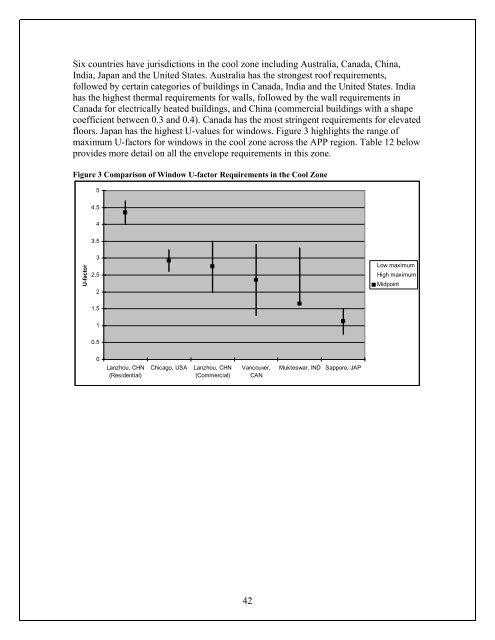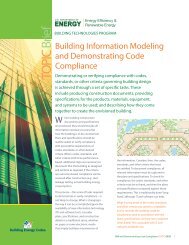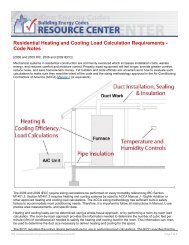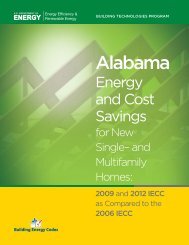Shaping the Energy Efficiency in New Buildings - Building Energy ...
Shaping the Energy Efficiency in New Buildings - Building Energy ...
Shaping the Energy Efficiency in New Buildings - Building Energy ...
You also want an ePaper? Increase the reach of your titles
YUMPU automatically turns print PDFs into web optimized ePapers that Google loves.
Six countries have jurisdictions <strong>in</strong> <strong>the</strong> cool zone <strong>in</strong>clud<strong>in</strong>g Australia, Canada, Ch<strong>in</strong>a,India, Japan and <strong>the</strong> United States. Australia has <strong>the</strong> strongest roof requirements,followed by certa<strong>in</strong> categories of build<strong>in</strong>gs <strong>in</strong> Canada, India and <strong>the</strong> United States. Indiahas <strong>the</strong> highest <strong>the</strong>rmal requirements for walls, followed by <strong>the</strong> wall requirements <strong>in</strong>Canada for electrically heated build<strong>in</strong>gs, and Ch<strong>in</strong>a (commercial build<strong>in</strong>gs with a shapecoefficient between 0.3 and 0.4). Canada has <strong>the</strong> most str<strong>in</strong>gent requirements for elevatedfloors. Japan has <strong>the</strong> highest U-values for w<strong>in</strong>dows. Figure 3 highlights <strong>the</strong> range ofmaximum U-factors for w<strong>in</strong>dows <strong>in</strong> <strong>the</strong> cool zone across <strong>the</strong> APP region. Table 12 belowprovides more detail on all <strong>the</strong> envelope requirements <strong>in</strong> this zone.Figure 3 Comparison of W<strong>in</strong>dow U-factor Requirements <strong>in</strong> <strong>the</strong> Cool Zone54.543.5U-factor32.52Low maximumHigh maximumMidpo<strong>in</strong>t1.510.50Lanzhou, CHN(Residential)Chicago, USALanzhou, CHN(Commercial)Vancouver,CANMukteswar, INDSapporo, JAP42
















